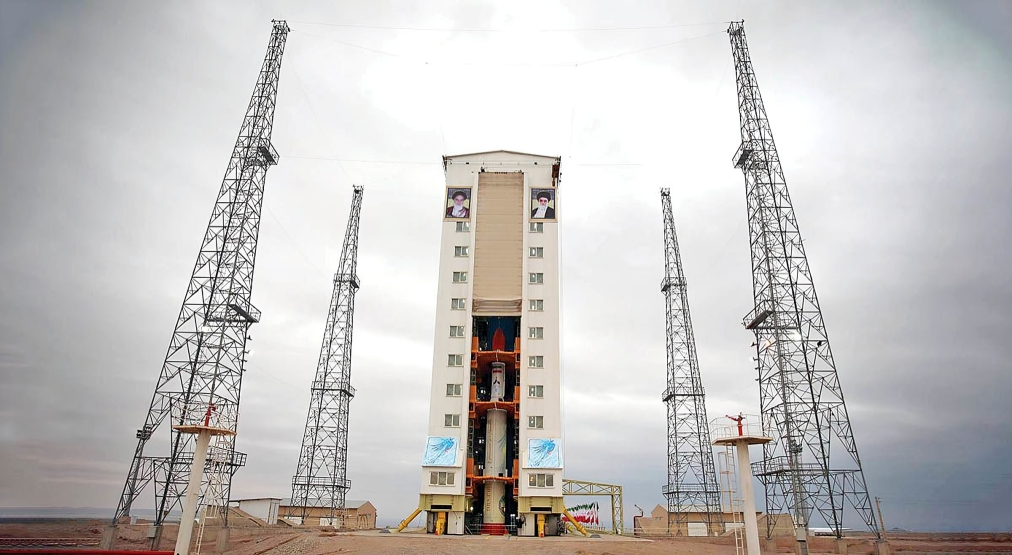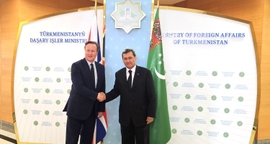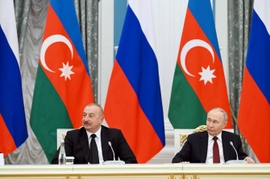Iran has successfully launched three satellites, including two nanosatellites, using the Simorgh satellite launch vehicle (SLV).
The Iran Space Agency (ISA), operating under the Communications and Information Technology Ministry, stated that this marks the “first time” Tehran has launched three Iranian satellites into orbit simultaneously with a domestically produced SLV, as reported by Fars News Agency.
The 32 kg Mahda satellite entered a 450-km elliptical orbit with an apogee of 1,100 km on January 28. Two nanosatellites, Keyhan-2 and Hatef-1, weighing less than 10 kg each, were launched alongside Mahda.
Following the satellite launch, Iran’s Minister of Communications and Information Technology, Isa Zarepour, announced the successful reception of a signal from Mahda.
Mahda’s mission aimed to evaluate the Simorgh SLV’s capability to deploy multiple satellites and assess the performance of domestically produced space technologies. Keyhan-2 focused on local positioning for ground receivers without relying on global positioning systems (GPS), while Hatef-1 was designed for narrowband communication using the Internet of Things (IoT). These nanosatellites were produced by Iran Electronics Industries (IEI), which is under US sanctions.
Earlier, on January 20, Iran launched the Sorayya satellite into a 750-km orbit using the Qaem-100 satellite launch vehicle, designed by the Islamic Revolution Guards Corps (IRGC). The ISA reported on January 21 that Sorayya successfully transmitted its first signal to Earth. Weighing 47 kg, Sorayya has a lifespan of three years and a GPS precision of 20 meters.
The commander of the space department of the IRGC Aerospace Force, Brig Gen Ali Jafarabadi, announced plans to test the Qaem-105 SLV in the upcoming Iranian year and the Qaem-120, capable of placing a satellite into a 36,000-km orbit, within the next three years.
The launches have faced criticism from the US and some European countries, who view them as potential advancements in Iran’s ballistic missile programs. On January 26, the UK, France, and Germany jointly criticized Iran’s Sorayya satellite launch, expressing concerns about the Ghaem-100 SLV’s use of technology essential for long-range ballistic missile systems.
Iran, in response, emphasized its right to scientific and research advancements, including in aerospace, as its “inalienable and legitimate right.” The country’s foreign ministry stated that there are “no international regulations restricting its activities in space research” and added that Iran considers the use of “peaceful technologies” for scientific development and research as a “given and a reserved right.”
In November 2022, the IRGC’s Aerospace Force tested the sub-orbital spaceflight of the Qaem-100 launcher with the Rafe solid fuel engine, capable of carrying satellites of up to 80 kg to a 500-km orbit.
Notably, in December 2021, Iran launched the Simorgh SLV carrying three satellites, but the defense ministry later admitted the SLV failed to inject its payloads into orbit. Western governments remain concerned about the dual-use nature of satellite launch systems and their potential interchangeability with ballistic missile technologies capable of delivering nuclear warheads.







 President Ilham Aliyev shed light on the evolving contours of the peace process with Armenia during an international conference in Baku this week. ...
President Ilham Aliyev shed light on the evolving contours of the peace process with Armenia during an international conference in Baku this week. ...
 Azerbaijan and Armenia started the process of demarcation of their border on Tuesday, with the installation of the first border markers based on ge...
Azerbaijan and Armenia started the process of demarcation of their border on Tuesday, with the installation of the first border markers based on ge...
 President Aliyev emphasized the critical role of the North-South Transport Corridor in fostering transport cooperation between Azerbaijan and Russi...
President Aliyev emphasized the critical role of the North-South Transport Corridor in fostering transport cooperation between Azerbaijan and Russi...
 Iran and Pakistan have signed eight cooperation documents in various fields, and agreed to strengthen ties to fight terrorism in the region.
Iran and Pakistan have signed eight cooperation documents in various fields, and agreed to strengthen ties to fight terrorism in the region.
 As the conflict between Ukraine and Russia escalates, the strategic importance of Kharkiv, Ukraine's second-largest city, has come sharply into focus.
As the conflict between Ukraine and Russia escalates, the strategic importance of Kharkiv, Ukraine's second-largest city, has come sharply into focus.



